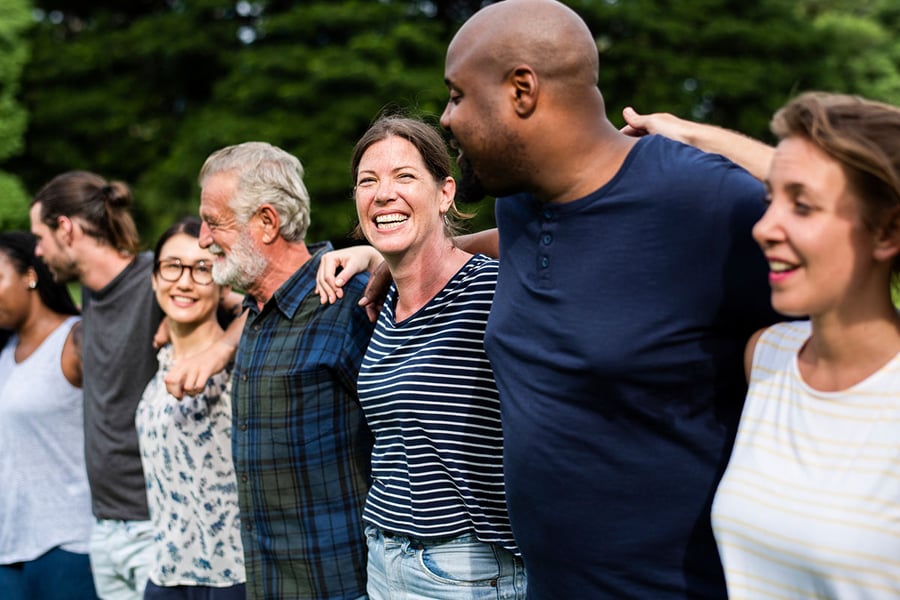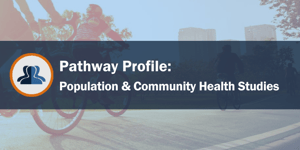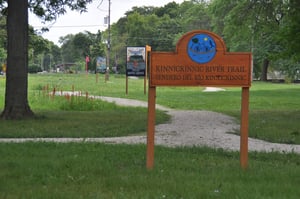To explore more Coffee Conversations with Scientists episodes, click here
Every single day, Wisconsin families and communities are harmed by violence.
Whether it is the gun violence that appears in the daily headlines or the more invisible epidemic of domestic violence and suicide, our communities are hurting.
What kind of work is being done to help Wisconsin communities heal from violence?
And what types of programs and preventative measures can stop violence from happening in the first place?
The Problem of Violence
Violence is a complicated problem that affects every aspect of our lives. It’s going to take a multi‑layered approach to prevent violence and heal from its effects.
“I can't underscore enough how important it is for us to approach this as a movement, whether we're talking about violence prevention in general, mental health, or gun violence,” says Reggie Moore, Director of Violence Prevention Policy and Engagement at MCW’s Comprehensive Injury Center. “In a movement, everybody has a role to play. If there's somebody that you care about that's struggling with mental health or addiction, connecting them to health care so that they don't end up incarcerated or end up hurting themselves or others — that's violence prevention. Making a phone call to advocate for policy change is violence prevention. We all can do something to make a difference.”
Before assuming his role at MCW, Moore led the City of Milwaukee’s Office of Violence Prevention. He has devoted his career to understanding and rooting out violence in communities.
One important point that Moore drives home is that violence is a public health issue. So effective interventions and advocacy efforts need to recognize that fact.
A Public Health Crisis
Violence is not just a problem for the police, courts, or politicians. If we look at the symptoms and the effects of gun violence, it has many similarities to a pandemic. There are risk factors that increase the likelihood of someone being a victim or a perpetrator of violence. And there are protective factors that can actually reduce the risk of violence.
Reframing violence as a public health issue also helps us focus on healing and understanding the impact that gun violence continues to have in communities. Whether someone is directly or indirectly affected by violence, violence is a trauma that affects entire communities — and our entire society.
When Moore talks about violence prevention, he is talking about reimagining public safety. The communities that experience the heaviest burden of violence already know what is working, and what isn’t.
One important key to addressing and healing communities is the direct involvement of people most affected.
That’s where efforts like Blueprint for Peace become essential tools for addressing root causes of violence and despair.
Blueprint for Peace
In Preventing Violence, Promoting Safe and Healthy Communities, a 2021 episode of Coffee Conversations with Scientists, Moore shared details from the community‑led violence prevention effort that he helped spearhead in Milwaukee: Blueprint for Peace.
With funding from the Advancing a Healthier Wisconsin Endowment, the TIDES Foundation, and the federal ReCAST Milwaukee initiative, the City of Milwaukee Health Department’s Office of Violence Prevention launched a massive effort to understand what Milwaukeeans were experiencing, responding to their ideas about how to make the city safer and healthier.
More than 1,500 people from all walks of life participated in developing a set of prevention principles aimed at moving Milwaukee from being considered one of the most dangerous cities in the United States to being one of the safest.
The Blueprint for Peace includes the following:
-
Stop the shooting. Stop the violence.
-
Promote healing and restorative justice.
-
Support children, youth, and families.
-
Advance economic opportunity.
-
Foster safe neighborhoods.
-
Strengthen capacity and coordination of violence prevention efforts.
As these goals illustrate, the idea is to look beyond the presence of violence and toward a future where opportunity, access to resources, and investment in communities reduces the likelihood of violence.
Unlearning Violence
Although gun violence is a significant part of the violence epidemic, not all violence involves firearms. Guns are an outgrowth of a deeper problem of using violence to solve problems.
In the 2016 Milwaukee County Community Health Survey, 42% of people said they believed violence was a top community health concern. And Blueprint planning stakeholders discussed many forms of violence: community violence, including gun and group‑based violence; intimate partner violence; sexual violence; child maltreatment; structural violence, including racial violence; violence by law enforcement officers; mass incarceration; drug‑related violence; and carjacking.
“When we work with victims or perpetrators, they talk about the fact that they grew up in environments or homes where violence was normalized,” Moore says. “But it can be unlearned.”
Sharing strategies for de‑escalation and self‑management can help on an individual level. But we also need to look at the social factors that contribute to violence and despair.
Issues like poverty and concentrated unemployment can’t be ignored when taking a public health approach to violence prevention.
Levels of Prevention
There are many different strategies for addressing violence across the continuum of prevention, intervention, and healing. Communities that do well implement these strategies in concert with each other. Moore mentions a few that are making a difference in Milwaukee.
-
Investment in programs that serve young people. Research shows that when young people are connected to a consistent, positive, and caring adult, they do better in school and in life. Despite the success of youth mentorship organizations like Running Rebels, service programs are significantly underfunded.
-
Support for violence intervention programs. When we provide intensive case management, support, and life coaching to people who may be at risk of violence or have violence in their past, they are able to share strategies and interventions that may save lives.
-
More trauma‑based mental health support. Children and adults who have been exposed to violence need help ensuring that they receive the mental health support that can help them heal and break the cycle of violence.
Healing from Twin Pandemics
Crime statistics are showing an increase in violence in the past two years, coinciding with the pandemic. It’s too soon to say whether the increase in violence in Milwaukee and elsewhere is directly connected to the pandemic.
However, there is little doubt that the pandemic created stress, pressure, and economic uncertainty for many people.
There is a greater need for mental health services, and especially for trauma‑informed care.
As a society, we can do more to invest in this important aspect of violence prevention. And we can do a better job of educating the public about the benefits of getting professional help. Mental health conditions are still stigmatized, which leads to people feeling that they are weak if they need to talk with a social worker or counselor.
With stronger partnerships, accessible and culturally relevant mental health services, and investment in the communities most directly affected by violence, we can begin the healing process.





